
Steamboats of Australia
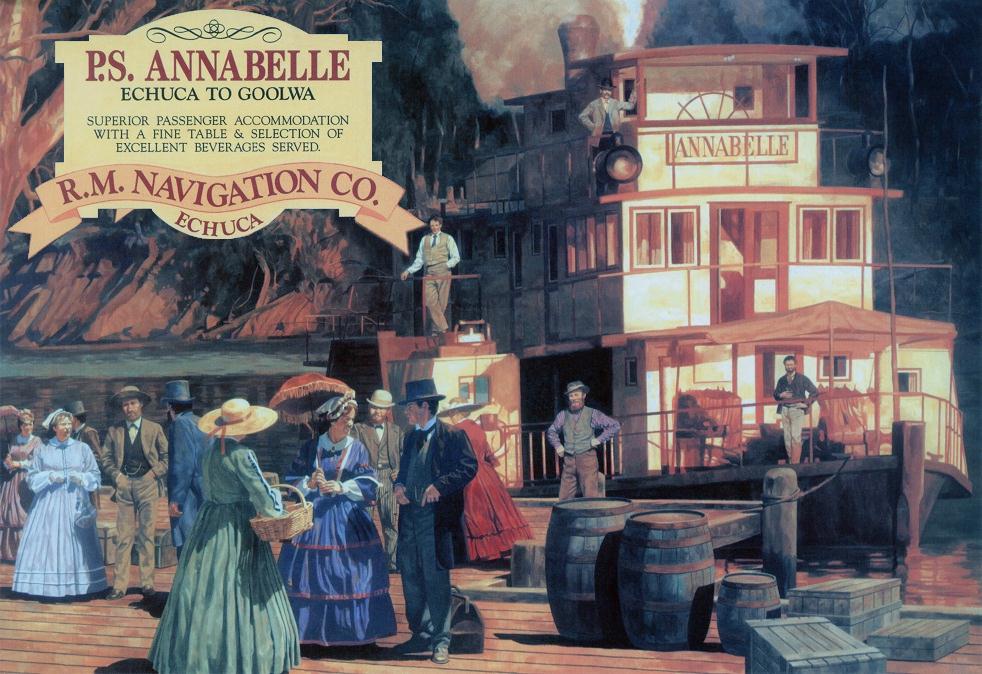
Australia's ANNABELLE "Paddle Ship"
"P.S. (Paddle Ship)
ANNABELLE
Echuca to Goolwa
R. M. Navigation Co. Echuca" - (R.M. may refer to "Royal Mail")
Have not yet found an ANNABELLE listed as a historical or contemporary steamboat so it may be a "fictional/generic" boat invented for the painting Both ports of call are on the Murray River in Australia in two separate districts:
Echuca is in Victoria/New South Wales
Goolwa is in South Australia
From the Australian Heritage Collection commissioned by Connell Lee. Printed on top quality tin plate with safety rolled edges.
Finished with a matt protective varnish.
19.75" x 13.75"
Australia's most talented artists and illustrators were employed to reflect the best of our landscape, traditions and icons.
The highest quality manufacturing processes available were used to ensure the sign range is of global standard.
http://www.billiards.com.au/australian-heritage-series-p-s-annabelle-riverboat-echuca-tin-sign.html
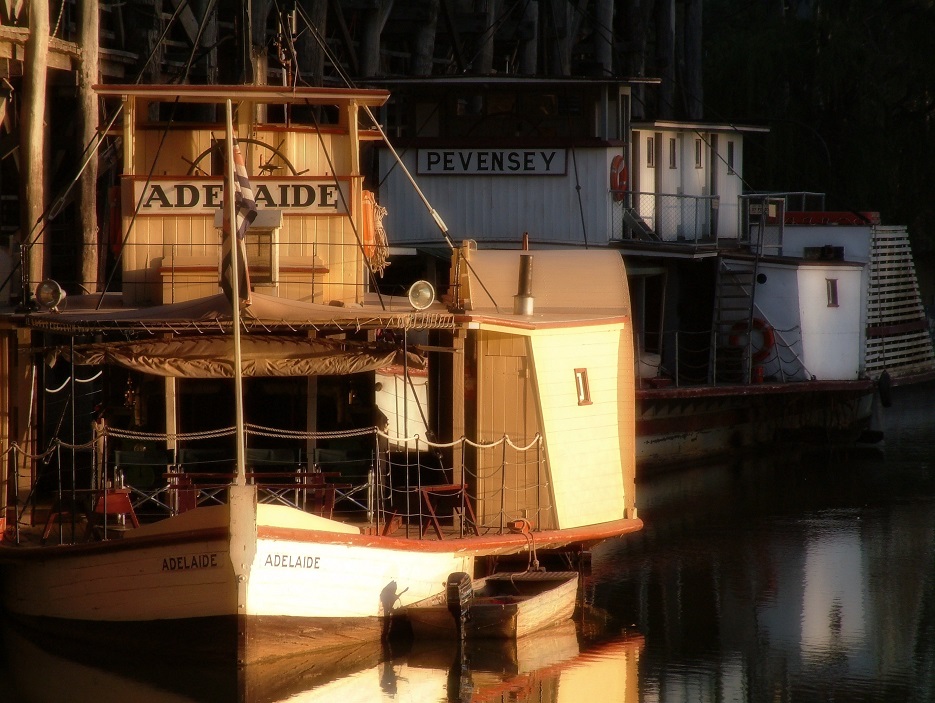
Came the Dawn: Photographer's name added : Murray River Paddle Steamers ADELAIDE & PEVENSEY at Echuca, Australia wharf
Beautiful photo of the Murray River Paddle Steamers ADELAIDE & PEVENSEY at Echuca, Australia wharf bathed in early morning sunlight.
TheUrbanGarage
Anne Gibbons, owner curator
David Hancock, co-owner, Photographer
Adelaide, Australia Etsy.com
"Paddle Steamer Print, Vintage Wooden Boat, PS Adelaide, Echuca AUSTRALIA"
Available in 4 choices of Digital Wall Prints in the following sizes:
8x11" $14.93
11x16" $22.41
16x24" $96.52
24x36" $168.35
Handmade item
Ready to ship in 3-5 business days
From Australia
Wikipedia
PS Adelaide was one of the fastest paddles steamers on the Murray River.
Owner: J.C. Grassey and Partners(first owners)
Route: Murray River, Australia
Builder: George Linklater
Laid down: 1866
Homeport: Echuca, Victoria (Australia)
Status: Tourist vessel
Class and type: Paddle steamer
Propulsion: Steam
PS Adelaide is the oldest wooden hulled paddle steamer still operating anywhere in the world. It is now moored at the Echuca Wharf and used for special occasions.
PS Adelaide was built by George Linklater at Echuca in 1866 for J.C. Grassey and Partners. It was used by the original owners to transport wool to Echuca from nearby sheep stations. It was also a part-time passenger boat, bringing the ladies into town to do their shopping.
PS Adelaide was later purchased by the Murray River Sawmill Co and used as logging steamer. PS Adelaide operated as a logging steamer until 1958, before being sold to a South Australian owner and leaving Echuca. Purchased by the Echuca Apex Club in 1960, the vessel returned to Echuca and was eventually removed from the river for display in a local park.
In the early 1980s work began on restoring the vessel's hull and it was re-launched in 1984. With restoration completed in 1985, the PS Adelaide was re-commissioned by the Prince and Princess of Wales.
Wikipedia
P.S. Pevensey is an authentic paddle steamer, with its original steam engine, in the fleet of paddle steamers at Echuca Wharf.
Pevensey
Route: River Murray, Australia
Builder: Permewan Wright & Co. Ltd.
Laid down: 1911
Homeport: Echuca, Victoria (Australia)
Status: Tourist vessel
General characteristics
Class and type: Paddle steamer
Displacement: 130 tons
Length: 112 ft 5 in (34.3 m)
Beam: 23 ft 0 in (7.0 m)
Pevensey starred in the role as the fictional PS Philadelphia in the Australian television mini-series All the Rivers Run, made in Echuca in 1982-1983. The PS Emmylou, also based at Echuca, starred as the PS Providence in the series. PS Pevensey is named after a sheep property on the Murrumbidgee River called Pevensey Station. The paddle steamer was built at the Moama slipway in 1911 by Permewan Wright & Co. Ltd.
Pevensey collected bales of wool from sheep stations and brought them to the Echuca wharf. From the wharf, it was loaded onto trains and taken to Melbourne for export overseas. Pevensey could carry 815 bales of wool and a total of 2000 bales when barges were towed along behind. Pevensey's barge was called Ada.
After the river trade ended, Pevensey was tied up at Mildura. It later was towed to Echuca to be restored in 1973.
PS Pevensey is powered by its original steam engine, built by Marshall, Sons & Co. of England. It is a 20 h.p., two-cylinder steam engine No 55721. PS Pevensey could achieve speeds of 8 knots. The paddle steamer's construction is iron and timber.
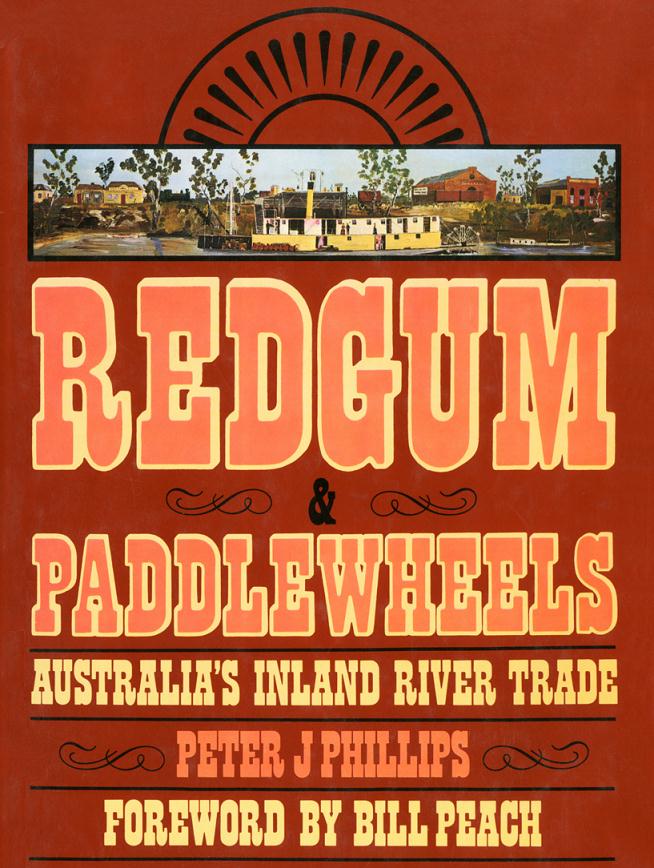
Redgum & Paddlewheels : Australia's inland river trade
Redgum & Paddlewheels : Australia's inland river trade
Dust jacket of a 1980 Australian publication about the history of river commerce on Australia's Murray, Darling and Murrumbidgee Rivers. The first word in the title (Redgum) refers to an important resource that was harvested along the river and carried to Echuca for distribution. An online reference explains its uses:
Redgum (a type of eucalyptus tree) has a reputation for durability, strength and its distinctive red colouring. Its wide availability has seen it used for a range of applications including heavy construction, railway sleepers, flooring, framing, fencing, plywood and veneer manufacture, wood turning, firewood and charcoal production.
Redgum & Paddlewheels : Australia's inland river trade
by Peter J. Phillips foreword by Bill Peach
Published by Vic Collingwood: Greenhouse,
Australia 1980
Dust jacket synopsis:
"For a brief but exciting period between the 1850s and the 1890s, Australia's Murray, Darling and Murrumbidgee Rivers were the scene of a thriving transport industry.
Over three hundred paddle steamers plied their way up and down these great inland rivers and their tributaries, carrying cargoes of wool, wheat and timber, hardware and haberdashery, clothing, liquor, furniture, groceries—and people.
The dusty little town of Echuca became the chief port of the riverboat trade, and the 1880s it was the second largest port in Victoria, its wharves and shipyard bustling with constant activity.
In this book, Peter Phillips brings to life the adventure and romance of the days of the paddle steamers. Based on lengthy research and his own intimate knowledge of the Echuca district. his stories tell of the dramas, the hardships, the adventures and the tragedies, the heroes and characters of those colorful days.
Lavishly illustrated with historic photographs, Redgum and Paddlewheels introduces us to people like Captain Francis Cadell, the first man to open up the Murray; the irascible Captain Mace; Captain Edward Diener and his wonderful floating emporium; and Captain Pearl Hogg, the only woman to hold a master's certificate on the Murray.
We learn about the snagging boats which made the river safe for traffic; about the Jane Eliza, which during a drought took three years to get from Goolwa to Bourke, but made the return journey in two weeks when the floods came down; and about the horrifying sight of the blazing Bunyip circling madly out of control in the middle of the river and running down the frantically swimming crew.
We meet the timber men and fishermen of the rivers, and follow the decline of the river trade and the many paddle steamers which now, alas, lie rotting beneath the water. But we also hear of those many enterprising spirits who are restoring the old boats to their former glory and bringing back to the river an echo of the past."
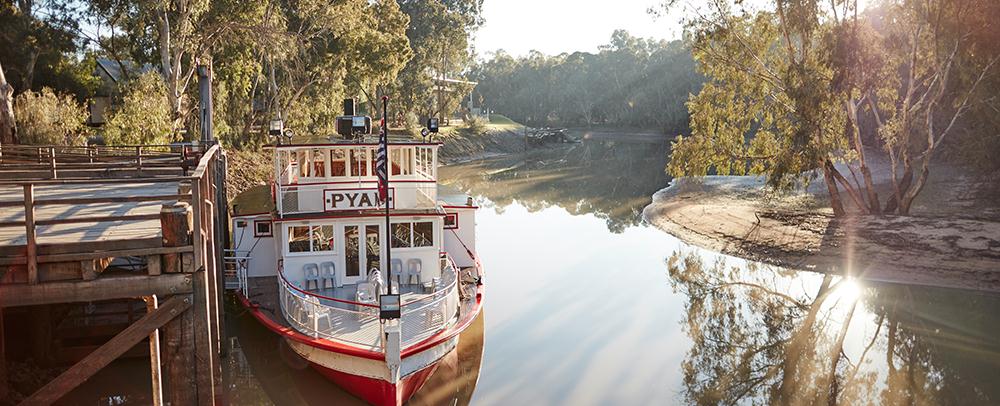
The paddlesteamer Pyap was built at Mannum in South Australia in 1896
ABOUT THE P.S. (PADDLE STEAMER) "PYAP"
pioneersettlement.com.au
Pioneer Settlement - Rides & Cruises
pioneersettlement.com.au
Cruise the mighty Murray River aboard the PS Pyap. One hour cruises depart from the Pioneer Settlement wharf each day, taking you upriver past the Riverside Caravan Park, Murray Downs Marina and the historic Murray Downs Homestead.
The paddlesteamer Pyap was built at Mannum in South Australia in 1896.
Despite her great size - she is almost 30 meters long and 4.8 meters wide - she has a very shallow draft which means she can float in less than a meter of water.
In her early days she was used a floating general store. She travelled the lower Murray River, stopping at small towns and farm stations along the way.
Inside, she had a serving counter, a store section and a separate drapery at the rear of her lower deck. The crew slept on the upper deck.
The PS Pyap travelled 500 kilometers each week selling goods to settlers at over 60 settlements and landing places along the river.
Cruise the mighty Murray River aboard the PS Pyap.
One hour cruises depart from the Pioneer Settlement wharf each day, taking you upriver past the Riverside Caravan Park, Murray Downs Marina and the historic Murray Downs Homestead.
Cruises are daily at 2.30pm. On weekends, public holidays and Victorian school holidays, an extra cruise also departs at 10.30am.
Boarding of the Pyap is via a ramp and at times depending on river levels can become quite steep which some visitors may find it difficult to manage.
Please note cruises are unavailable each February as the Pyap undergoes maintenance.
Set on three hectares of land on the banks of the Little Murray River, the Pioneer Settlement lets you experience Australian history first hand.
You will find real-life Mallee cottages, a hotel, schools and shops, plus our enormous collection of working tractors and machinery - sourced mostly from the local area. You can feel the heat in the blacksmith shop, listen to the sounds of the old Pianola or take a ride through our Mallee township on a horse and cart. As you wander the site, you can also chat to our staff and volunteers, all looking the part in costumes of the period. The Pioneer Settlement opened in 1966 after a joint community and government effort to recognize the unique history of our Murray Mallee region. By the 1970s, the Pioneer Settlement was one of the most popular tourism destinations in Victoria, if not Australia, and the concept has been emulated around the country. The Settlement is now introducing more ground-breaking tourism concepts to complement the historical Mallee townships. The Heartbeat of the Murray Experience will include a laser light show that, in a world-first, will combine modern laser technology with the natural river environment. It will tell the story of the Murray region from prehistoric times until today.
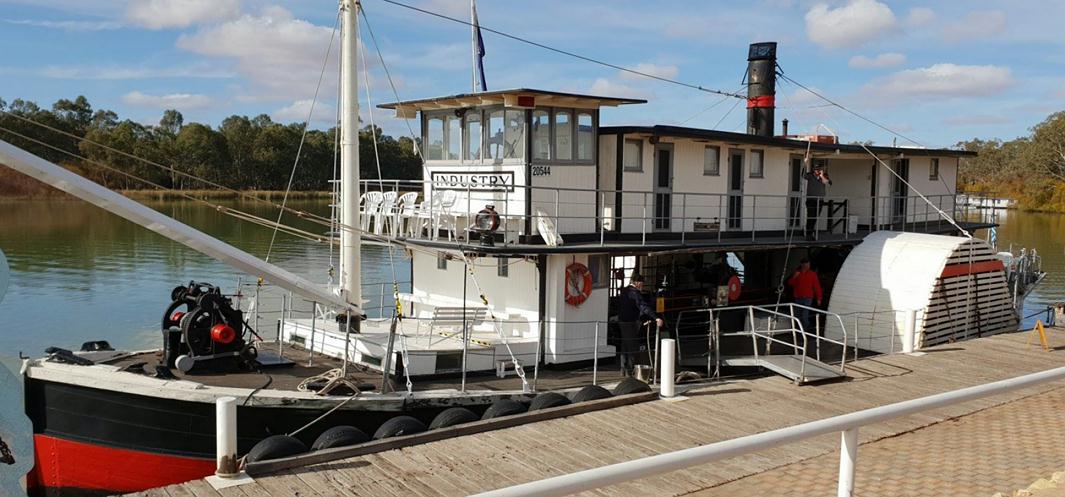
The P.S. INDUSTRY on the Murray River
From "Discover Murray, Australia's Great River":
murrayriver.com.au
The P.S. INDUSTRY was built on the shore of the Murray River in Goolwa, Australia and commissioned in January 1911 as a workboat for the SA Engineering & Water Supply Department. During her work life, the vessel played a major role in keeping the river open for traffic by removing snags and later in the construction of locks and weirs.
During the 1956 flood the PS Industry 'stood by' with steam up for several days ready for any emergency during those critical days of the flood when a total evacuation of Renmark appeared imminent.
In 1968, the P.S. INDUSTRY was decommissioned following 60 years of service with the E & WS and following a submission to the Premier, Hon. Don Dunstan, the Corporation of the Town of Renmark was allocated the Steamer to be used as an Historic Museum. In 1973 a basin to house the vessel was constructed alongside the Renmark Irrigation Trust's Pumping Station. The P.S. INDUSTRY opened as a static museum in 1975.
During this time, the vessel proved a popular tourist attraction, however in the late 1980's the move to restore her to working condition began to gather momentum.
In June 1990, a public meeting was held to gauge the level of interest in the restoration of the P.S. INDUSTRY and through this meeting a Friends of the P.S. INDUSTRY group was formed to oversee the restoration of the vessel.
During that time the PS INDUSTRY appeared as the Lady Mabel in the television series "The River Kings" which was adapted from Max Fatchen's popular novel. The membership base had swelled to 100 and the vessel had undertaken extensive trips to Loxton, Goolwa and Morgan.
Following complications in early 1994, the Friends of the P.S. INDUSTRY and Corporation of Renmark approached the Minister for Transport with regard to securing a loan for final restoration work of the vessel. This would enable the PS Industry to gain its survey standard which was so integral to its operation as a passenger vessel.
What following was almost a year of hard work by volunteers to bring the vessel to survey standard. Modifications such as, replacing steering chains below deck and reinforcing windows were long term jobs done with the assistance of volunteers.
On 16th July 1995, the Minister for Transport Diana Laidlaw re-commissioned the P.S. INDUSTRY as a historic passenger vessel. Since then, the Friends of the P.S. INDUSTRY have worked hard to repay their loan to the State Government (which was due to be repaid by 2004) through running cruises and taking charters.
It will be largely thanks to the efforts of many volunteers and community sponsors that the P.S. INDUSTRY will be able to be enjoyed by many more generations of Australians.
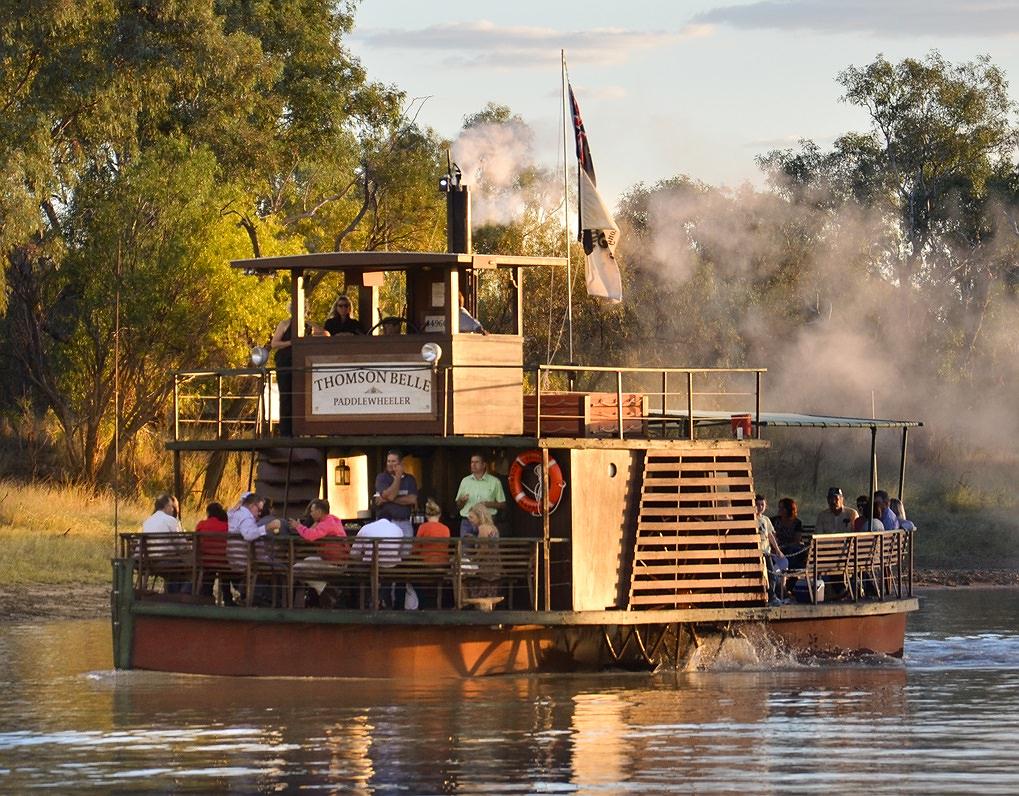
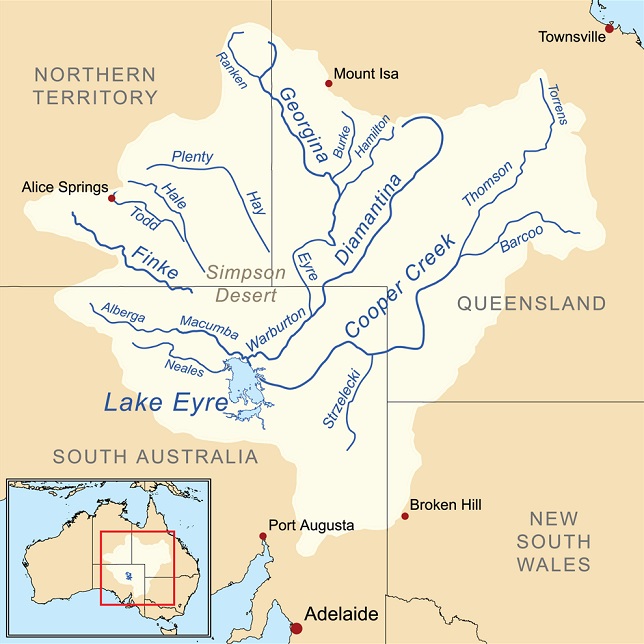
kinnonandco.com.au/
BE INSPIRED ON OUR THOMSON RIVER CRUISE
This is the original Thomson River Sunset Cruise, which includes Starlight's Spectacular Sound & Light Show and a stockman's dinner around the camp-fire.
Take a gentle cruise at sunset down the peaceful Thomson River on the only paddlewheeler west of the Great Divide or on the Thomson Princess Riverboat.
Then, join us for traditional stockman's camp-fire dinner followed by bush poetry with local outback storyteller.
Afterwards marvel as the riverbank is lit up with Starlight's Spectacular Sound & Light Show - a unique big-screen presentation featuring the Kinnon & Co family and locals in the amazing adventures of the notorious local cattle thief known as 'Captain Starlight'.
Finally, in the atmospheric surroundings of the bush at night, enjoy the timeless favourite—billy tea and damper.
Sunset Cruise experience includes:
Sunset Cruise on historic paddlewheeler (nibbles included, BYO drinks)
Traditional stockman's dinner (2 courses) with bush poetry
Starlight's Spectacular Sound & Light Show
Transfers to and from accommodation.
Our Sunset Cruise departs 4.30 pm
Monday to Saturday
April 1st to October 31st
Thomson River (Queensland)
From Wikipedia, the free encyclopedia
Thomson
River
Queensland State Archives 2133 The Thomson River at Longreach March 1938.png
Longreach, 1938
Country Australia
State Queensland
Part of Cooper Creek
Mouth confluence with the Barcoo River
The Thomson River is situated in western Queensland, Australia, and forms part of the Lake Eyre Basin. The river was named by the explorer, Edmund Kennedy, in the 1840s. The northernmost headwaters of the river begin as Torrens Creek, inland from Charters Towers. The watercourse becomes the Thomson just north of the town of Muttaburra, where the channels of Landsborough Creek, Towerhill Creek and Cornish Creek meet. Aramac Creek joins the river from the east, south of Muttaburra and Maneroo Creek flows from the west, joining the Thomson south of Longreach. Just to the west of Longreach the river is crossed by the Landsborough Highway. The river continues in a south westerly direction, passing the towns of Longreach, Stonehenge and Jundah, before joining with the Barcoo River north of Windorah to form Cooper Creek. This is the only place in the world where the confluence of two rivers form a creek. As with all of the rivers in the Lake Eyre Basin, the waters of the Thomson never reach the sea, and instead either evaporate, or, in exceptional flood, empty into Lake Eyre. Floods are relatively common within the catchement because of the summer monsoon rains. Due to the flat nature of the country traversed, the river can then become many kilometres wide, causing major difficulties. For much of the time, however, the river does not flow, and becomes a line of billabongs. The area through which the river flows is semi-arid blacksoil plains. The main industries of the area are sheep and beef cattle.
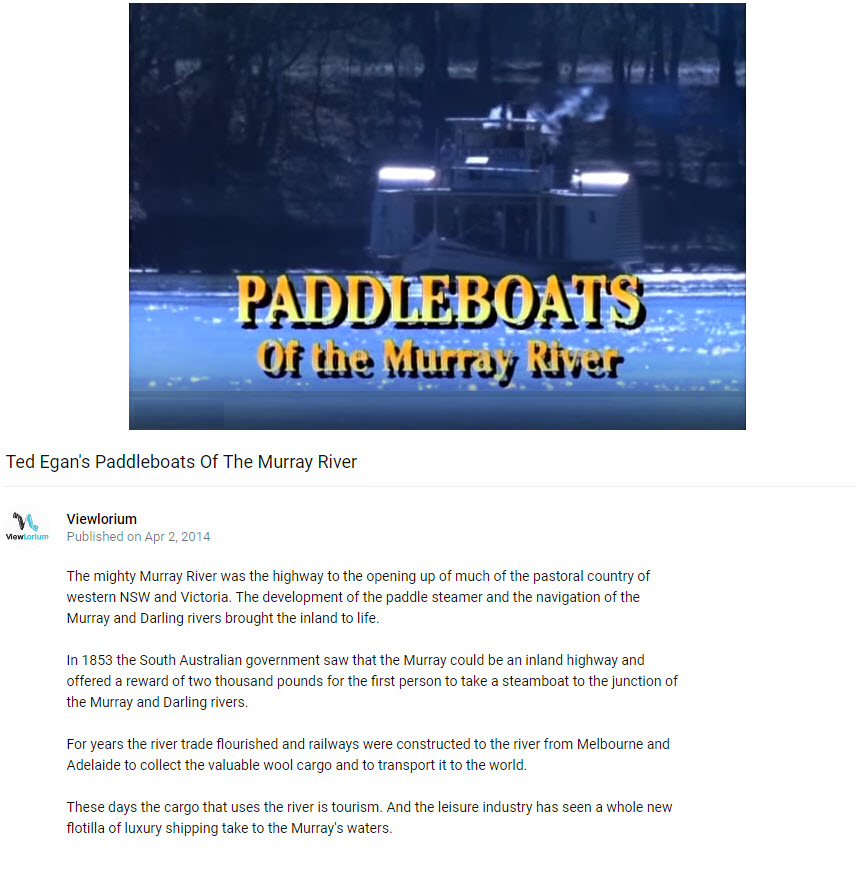
Paddleboats Of The Murray River
Youtube
This Australian "doc" on Murray River steamers has its moments such as the memories of a vintage lady who had been a cook on a boat in "the old days." This runs under an hour.
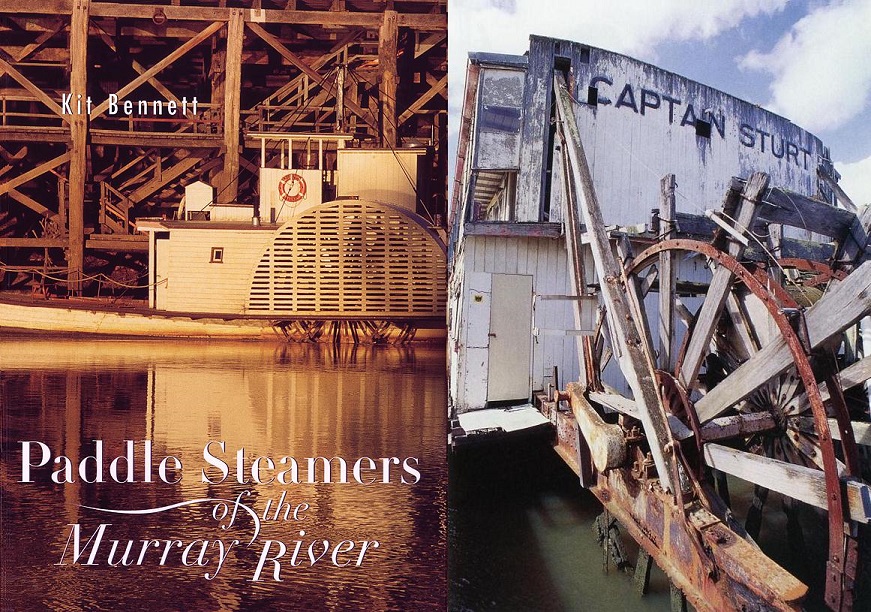
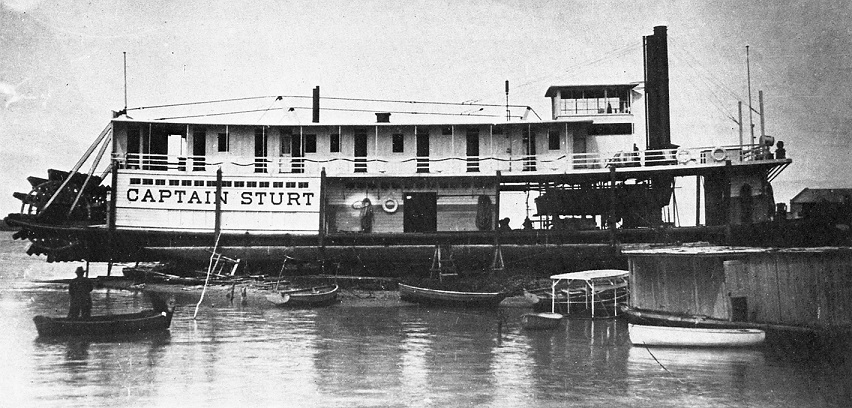
CAPTAIN STURT (Towboat, 1915-1935) Sternwheel Towboat Approximately 155 feet long Displaced about 888 tons
Built in 1915 by the Charles Barnes Company, Cincinnati, Ohio; the unassembled components of the boat were shipped from Cincinnati to Granite Rocks on the Murray River in South Australia and upon completion it was launched in 1916. In style the STURT was a "pool boat" like the well preserved W.P. SNYDER JR. on the Muskingum at Marietta, Ohio.
The CAPTAIN STURT, being built in the style of a Western River's steamboat with a sternwheel was unusual in Australia where most of the "paddle boats" were sidewheelers. The STURT was primarily used in the construction of 14 locks and dams, on the Murray River in South Australia, then was retired in 1935 and in 1938 the South Australian government sold her to someone who converted her into a house boat for a while and sometime after that she became a museum boat until around 1988 when she was abandoned, her hull resting as seen in the photo on the right on the bottom of the shallows next to a jetty at the old river town of Goolwa on the Murray.
Here is the poignant caption under the attached photo of the boat's deteriorated sternwheel: "The paddlewheel of the massive stern-wheeler, P.S. Captain Sturt, that has been broken up and carted away since this photograph was taken." Wish someone in Australia had recognized the historical significance of the STURT and spent the time and resources to restore and preserve her for posterity.
The cover photo of the sidewheeler ADELAIDE and the photo of the derelict STURT are both copyrighted by the book's author, Kit Bennett.
Paddle Steamers of the Murray River
by Kit Bennett
Hardcover
162 pages
Published by Lothian in 2004
ISBN-10: 0734407130
ISBN-13: 978-0734407139
8 1/2 X 11 1/4 X .65 inches
For those interested in getting a copy of this book (which is very worthwhile with excellent photographs and text) you can contact Bradstreet's in Hawthorn, Victoria to see if copies are still available. I bought my copy from them and was impressed by their prompt service and fast shipping to the U.S.
abebooks.com
Bradstreet's Books ANZAAB/ILAB
P.O. Box 2113
Hawthorn, VIC, Australia
3122
Below is a photo of the CAPTAIN STURT when she was brand new.
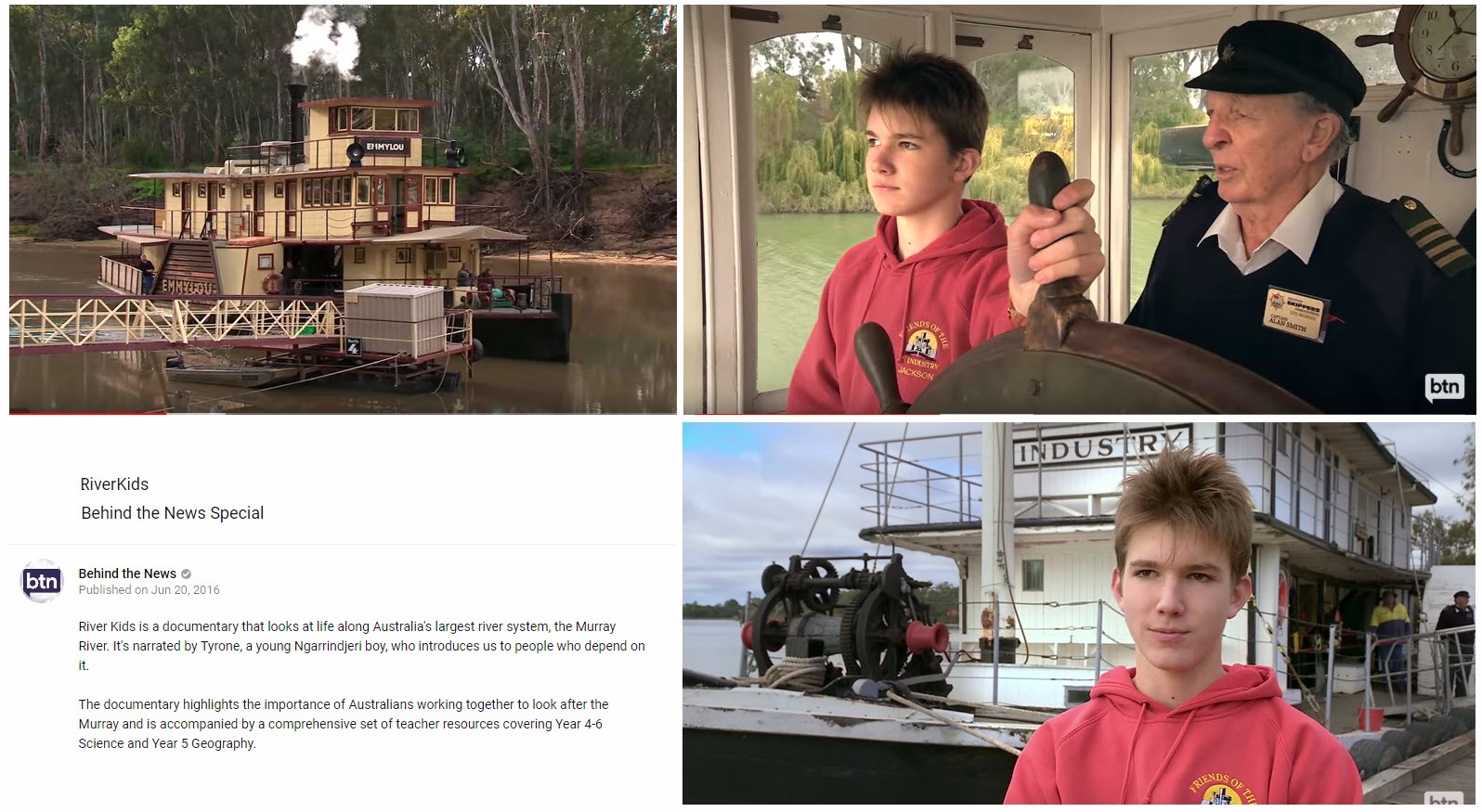
Murray RiverKids - Behind the News Special
RiverKids - Behind the News Special
Youtube
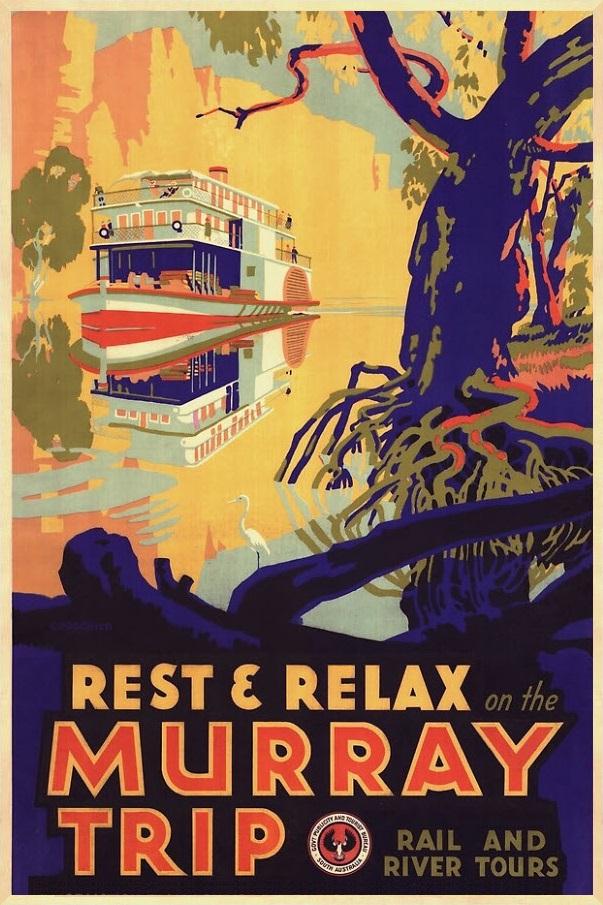
Murray River Australia Travel Poster
Circa 1st half of the 20th Century
Typical Murray River sidewheeler
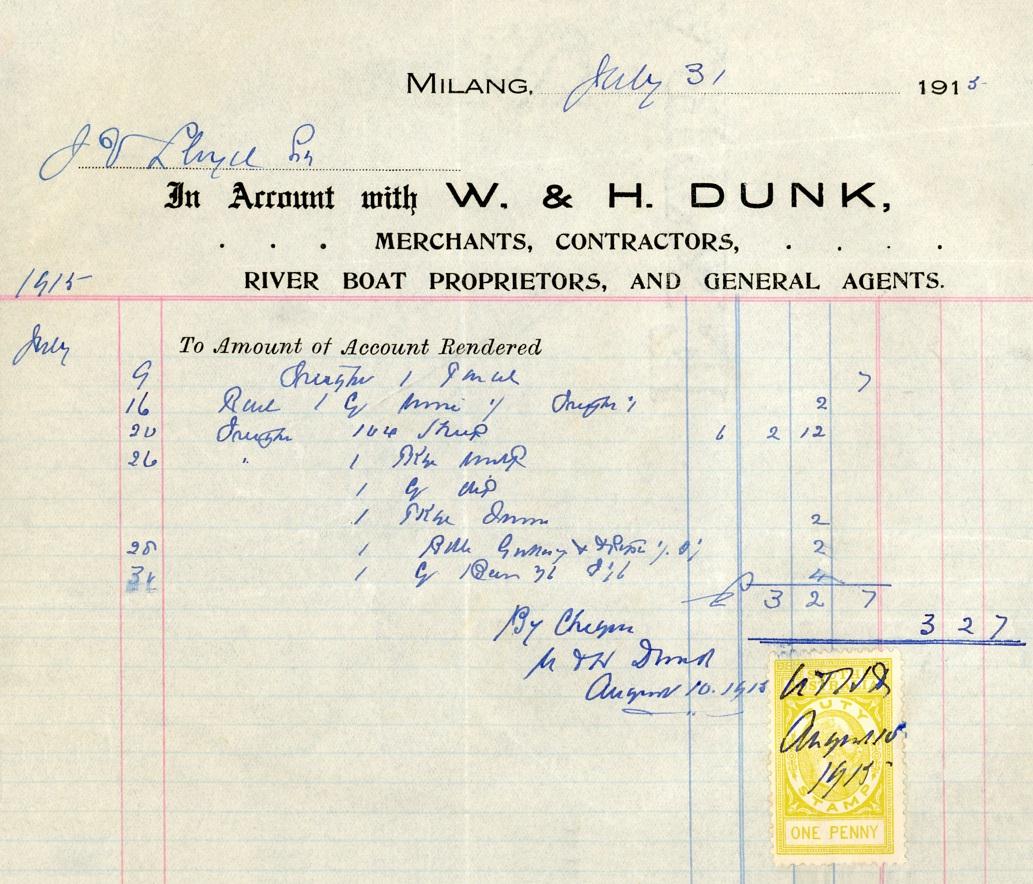
MILANG, SOUTH AUSTRALIA Waybill 1915
W. & H. DUNK
Merchants, Contractors
River Boat Proprietors and General Agents.
Account statement made at Milang, South Australia
Transaction dates 31st July, 1915 & 10th August, 1915
One Penny Duty Stamp attached
Milang is located in South Australia on the west coast of Lake Alexandrina about 44 miles southeast of the state capital of Adelaide and about 12 miles northeast of the municipal seat of Goolwa. The town was surveyed in December 1853; it became a significant port on the River Murray system between 1860 and 1880. Milang tourist attractions include boating, swimming and jet skiing on the River Murray.
The Milang Historical Railway Museum, opened in 1992 and located in the station building of the now-closed Milang railway line, features many old photos and railway memorabilia from the era when Milang was a significant port for the River Murray shipping trade. It has become one of Milang's major attractions with its displays of the railway-era history of the town and surrounding districts, its locomotive and carriages.

With the exception of images credited to public institutions,
everything on this page is from a private collection.
Please contact Steamboats.com for permission for commercial use.*
All captions provided by Dave Thomson, Steamboats.com primary contributor and historian.
